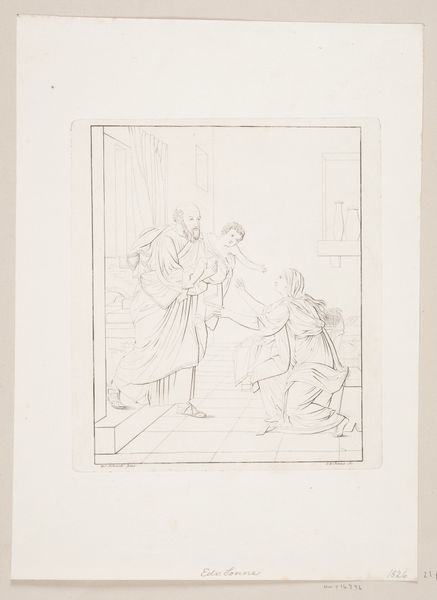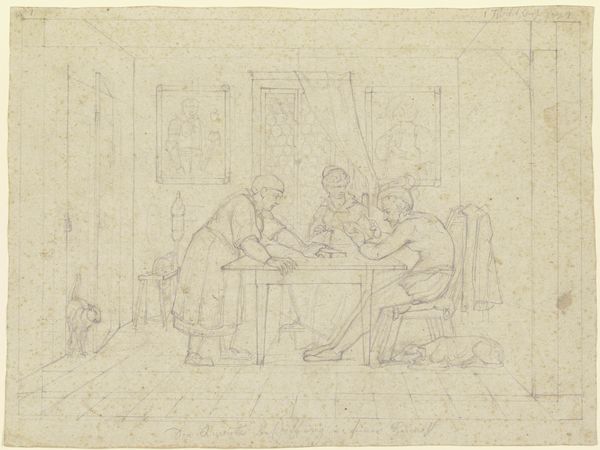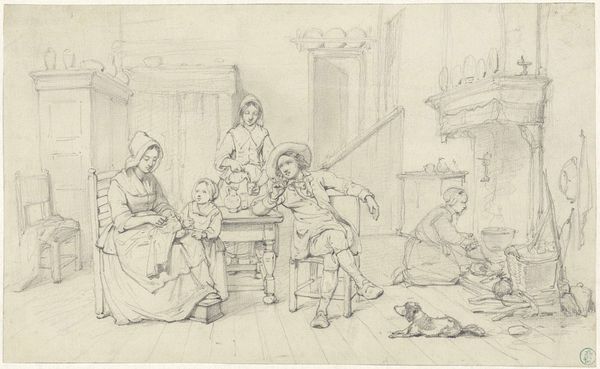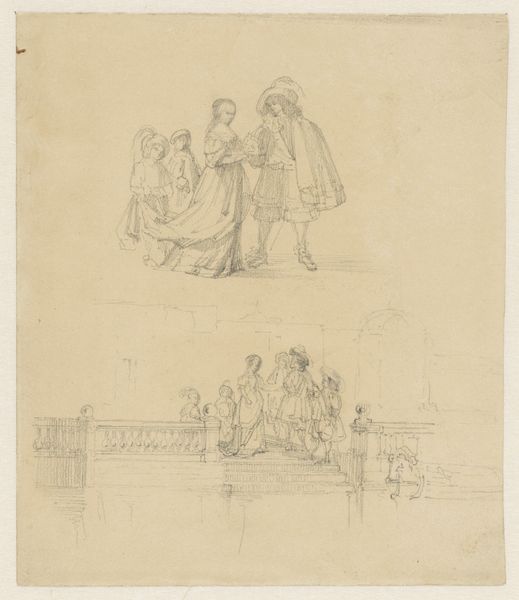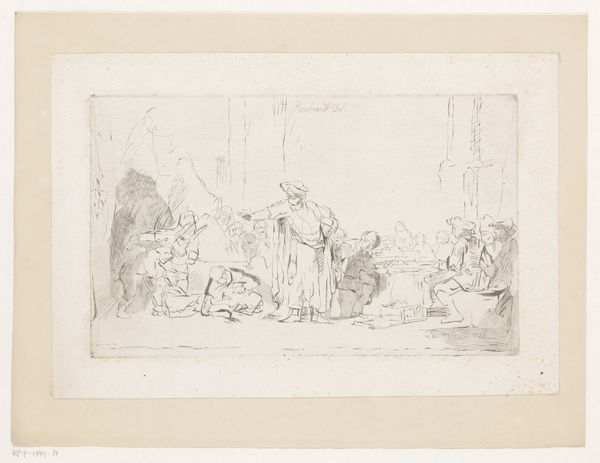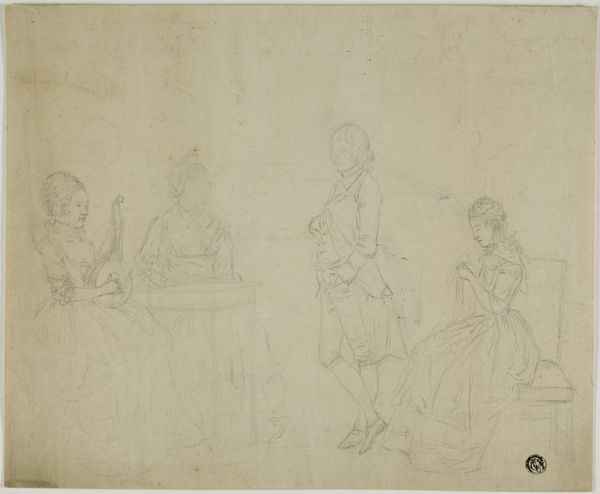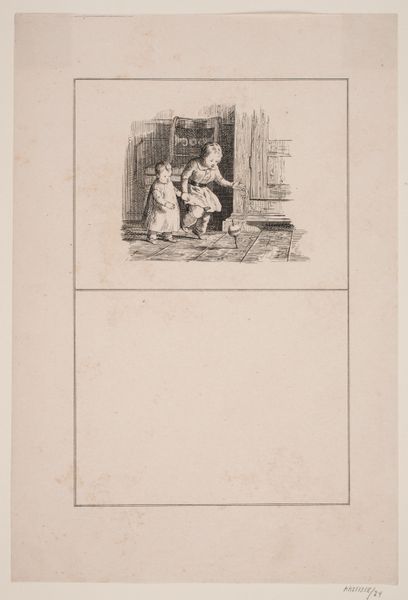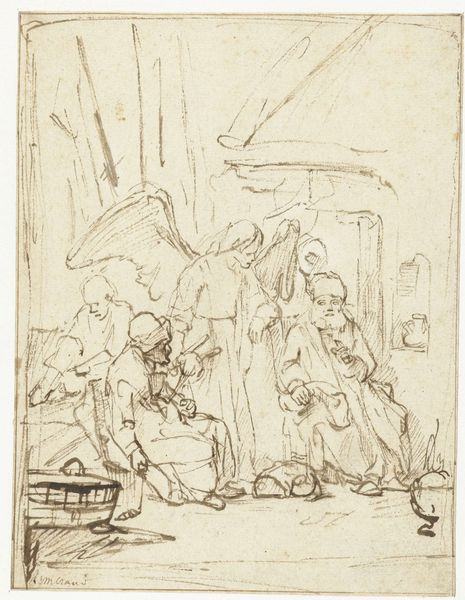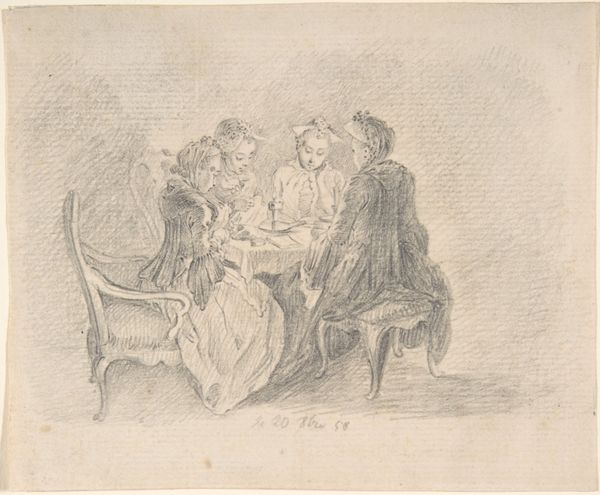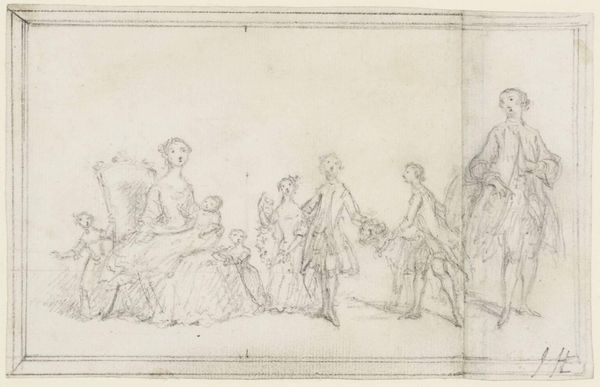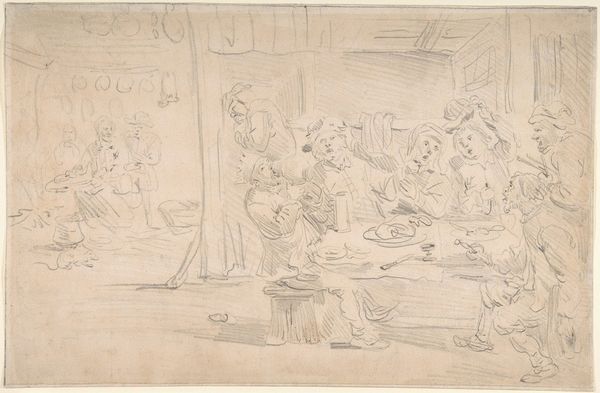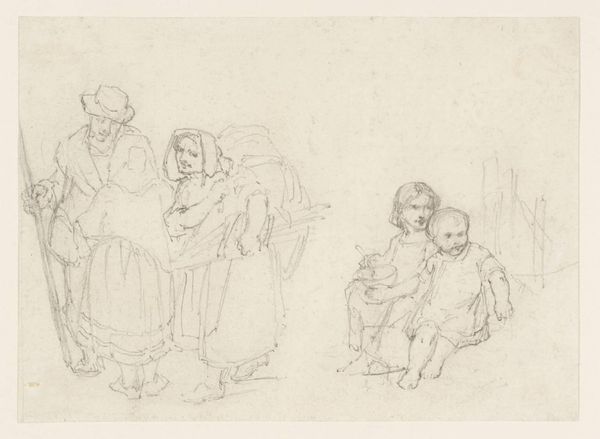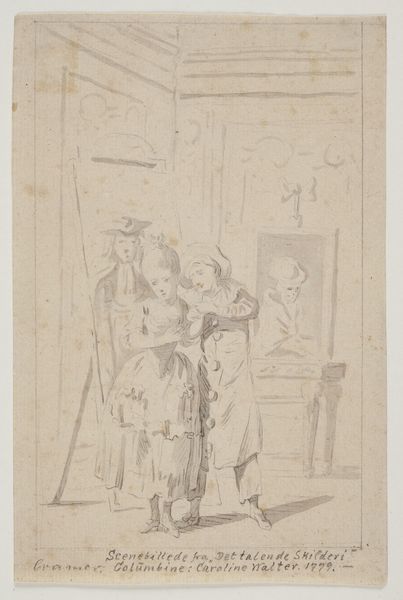
drawing, pencil
#
drawing
#
pencil sketch
#
figuration
#
pencil
#
genre-painting
#
northern-renaissance
#
realism
Dimensions: height 328 mm, width 207 mm
Copyright: Rijks Museum: Open Domain
Curator: This is Jan Brandes’ "Huiselijk tafereel," created between 1788 and 1808. It's rendered in pencil, a humble yet versatile medium. Editor: Immediately, the delicate, almost tentative quality of the pencil work lends a sense of quiet intimacy. The scene, a family at their table, feels like a fleeting glimpse into a private world. Curator: Brandes' choice of pencil on paper offers an accessible, democratic means of representation, moving away from the grandiosity often associated with paintings for the elite. The material simplicity underscores the everyday subject matter. Editor: And the way the light catches those white plates on the table! Food, community, and shared sustenance were obviously important symbols for the people portrayed, weren’t they? Curator: Indeed. Genre painting, portraying everyday scenes, gained popularity during this period, as did detailed depictions of food and eating. But let’s not forget the significance of drawing itself as a skill acquired through labor and training within social strata and family life. Editor: Absolutely, labor. It speaks volumes. Look at the subtle distinctions in posture, clothing—details which betray a nuanced understanding of class and social standing, doesn't it? The hats, the posture, it's almost a codified language. Even the dogs and cats add another dimension! Curator: The animals! Good eye! Think about domesticity being visualized. Perhaps the cat suggests independence? Editor: That's fascinating. What about the domestic symbolism of warmth and nurture then? Do the table and family dynamics presented reflect aspirations, or a documentation of life as lived? Curator: Perhaps both. And maybe the very act of capturing it with pencil reflects emerging consumer desires to see one's own everyday life mirrored back through images? It also raises important questions about access to representation, even with more affordable drawing techniques becoming popular at that time. Editor: This image reveals the way art objects helped formulate and codify behaviors and class markers that helped reinforce certain cultural values for Brandes’ patrons. This is interesting. Thank you. Curator: Thanks to you. I will remember to think about these images within an economy of production and skill now too.
Comments
No comments
Be the first to comment and join the conversation on the ultimate creative platform.
